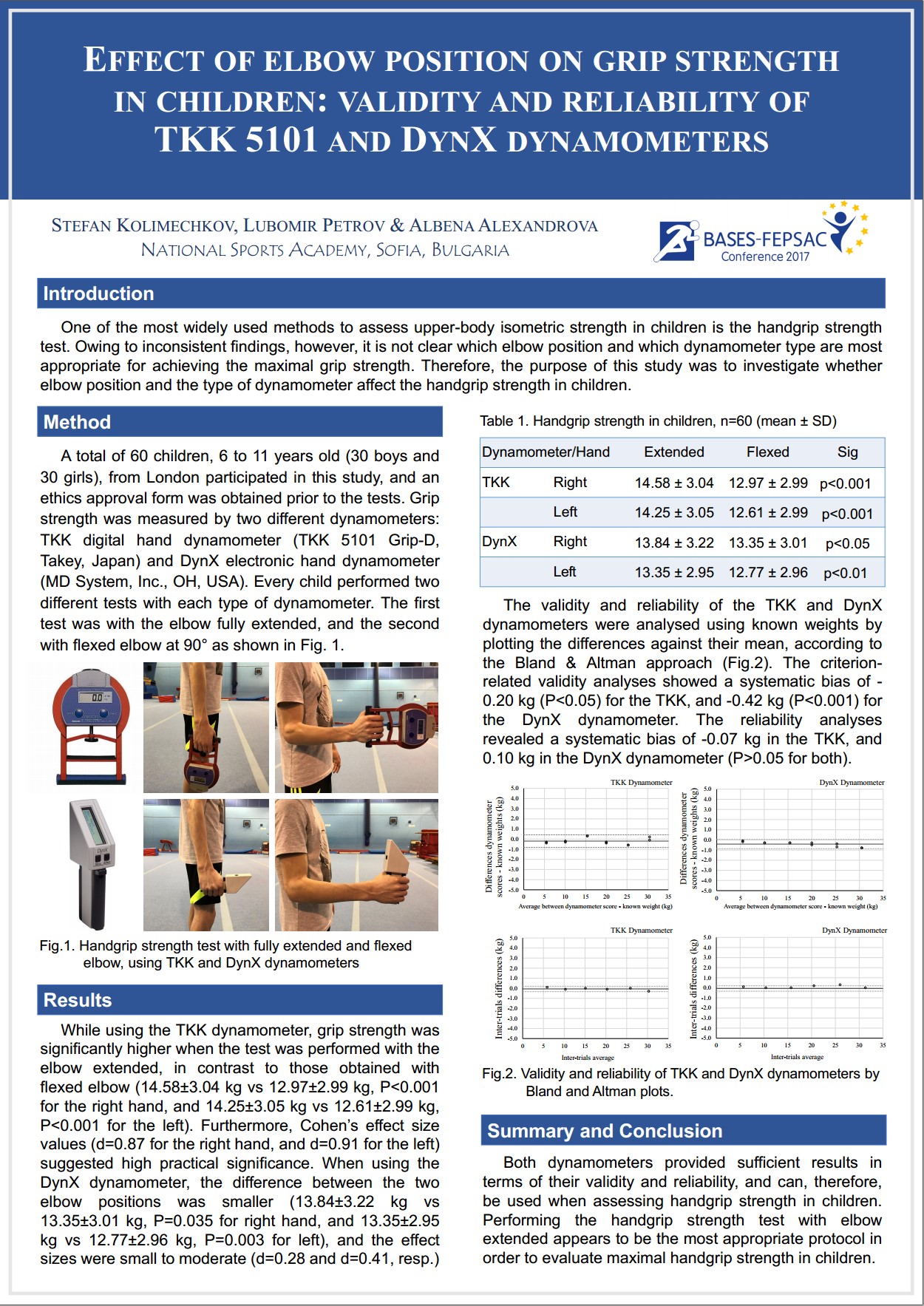BASES-FEPSAC Conference 2017

BASES-FEPSAC Conference 2017
Annual Conference of the British Association of Sport and Exercise Sciences (BASES)
 United Kingdom, Nottingham, East Midlands’s Conference Centre
United Kingdom, Nottingham, East Midlands’s Conference Centre
ABOUT THE CONFERENCE
This conference is the flagship event of the British Association of Sport and Exercise Sciences (BASES). The BASES-FEPSAC Conference 2017 was a joint conference combining BASES Conference 2017 with the 2017 FEPSAC European Sport Psychology Conference, and it was held on Tuesday 28 November and Wednesday 29 November 2017 at East Midlands Conference Centre, Nottingham.
OUR CONTRIBUTION
I presented findings from our study on handgrip strength in children during the poster discussions and exhibition session at the BASES-FEPSAC Conference in Nottingham. Our conference abstract was published in a supplement of the Journal of Sports Sciences in 2017. After the Conference, our study was built upon further and the complete findings were published in the Pedagogy of Physical Culture and Sports, Vol.24(5), 2020.
Effect of elbow position on grip strength in children: validity and reliability of TKK 5101 and DynX dynamometers
Poster
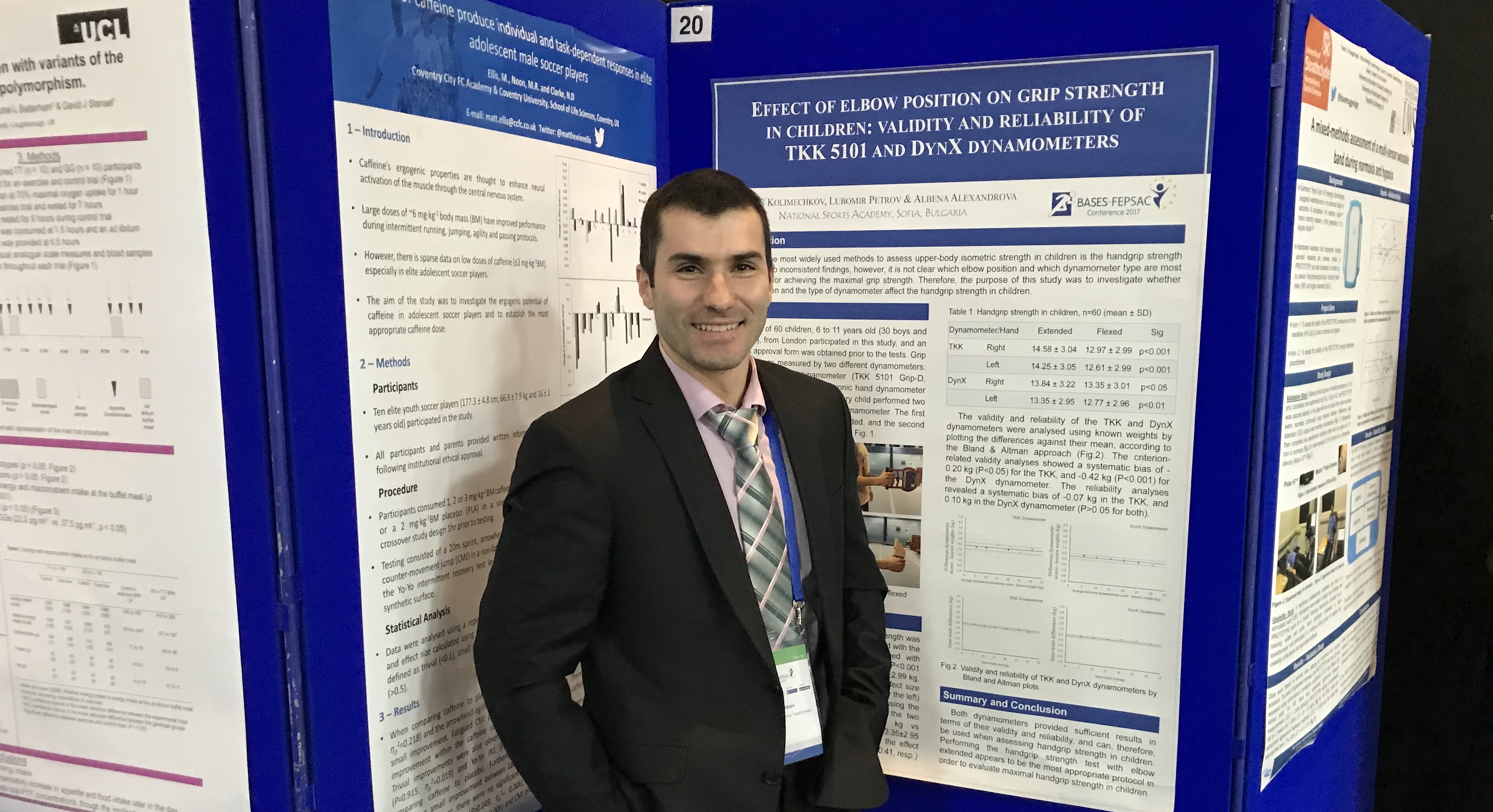
BASES-FEPSAC Conference 2017
Annual Conference of the British Association of Sport and Exercise Sciences
EFFECT OF ELBOW POSITION ON GRIP STRENGTH IN CHILDREN: VALIDITY AND RELIABILITY OF TKK 5101 AND DYNX DYNAMOMETERS
Stefan Kolimechkov, Lubomir Petrov & Albena Alexandrova
National Sports Academy, Sofia, Bulgaria
ABSTRACT
INTRODUCTION:
One of the most widely used methods to assess upper-body isometric strength in children is the handgrip strength test. Owing to inconsistent findings, however, it is not clear which elbow position and which dynamometer type are most appropriate for achieving the maximal grip strength. Similar studies have been conducted on adolescents, whereas, studies in children are scarce. Therefore, the purpose of this study was to investigate whether elbow position and the type of dynamometer affect the handgrip strength in children.
METHODS:
A total of 60 children, 6 to 11 years old (30 boys and 30 girls), from London participated in this study, and an ethics approval was obtained prior to the tests. Grip strength was measured by two different dynamometers: TKK digital hand dynamometer (TKK 5101 Grip-D, Takey, Tokyo, Japan) and DynX electronic hand dynamometer (MD System, Inc., Westerville, OH, USA). Every child performed two different tests with each type of dynamometer. The first test was with the elbow fully extended, and the second with flexed elbow at 90°.
RESULTS:
While using the TKK dynamometer, grip strength was significantly higher when the test was performed with elbow extended, in contrast to those obtained with flexed elbow (14.58 ± 3.04 kg vs 12.97 ± 2.99 kg, P < 0.001 for right hand, and 14.25 ± 3.05 kg vs 12.61 ± 2.99 kg, P < 0.001 for left hand). Furthermore, Cohen’s effect size values (d = 0.87 for right hand, and d = 0.91 for left hand) suggested high practical significance. When using the DynX dynamometer, the difference between the two elbow positions was smaller (13.84 ± 3.22 kg vs 13.35 ± 3.01 kg, P = 0.035 for right and, and 13.35 ± 2.95 kg vs 12.77 ± 2.96 kg, P = 0.003 for left hand), and the effect sizes were small to moderate (d = 0.28 and d = 0.41, respectively). The validity and reliability of the TKK and DynX dynamometers were analysed by using known weights within the range of the children’s strength (5-30 kg). The criterion-related validity analyses showed a systematic bias of -0.20 kg (P < 0.05) for the TKK, and -0.42 kg (P < 0.001) for the DynX dynamometer. The reliability analyses revealed a systematic bias of -0.07 kg in the TKK, and 0.10 kg in the DynX dynamometer (P > 0.05 for both dynamometers).
CONCLUSION:
Both dynamometers provided sufficient results in terms of their validity and reliability, and can, therefore, be used when assessing handgrip strength in children. Performing the handgrip strength test with elbow extended appears to be the most appropriate protocol in order to evaluate maximal handgrip strength in children.
Leading Author: Stefan Kolimechkov
Date & time: 28 November 2017, 1:15-2:15 pm
Poster discussions and exhibition, East Midlands’s Conference Centre,
Session-ID: D1.P20 Posters, Physiology and Nutrition
GALLERY, BASES Conference 2017
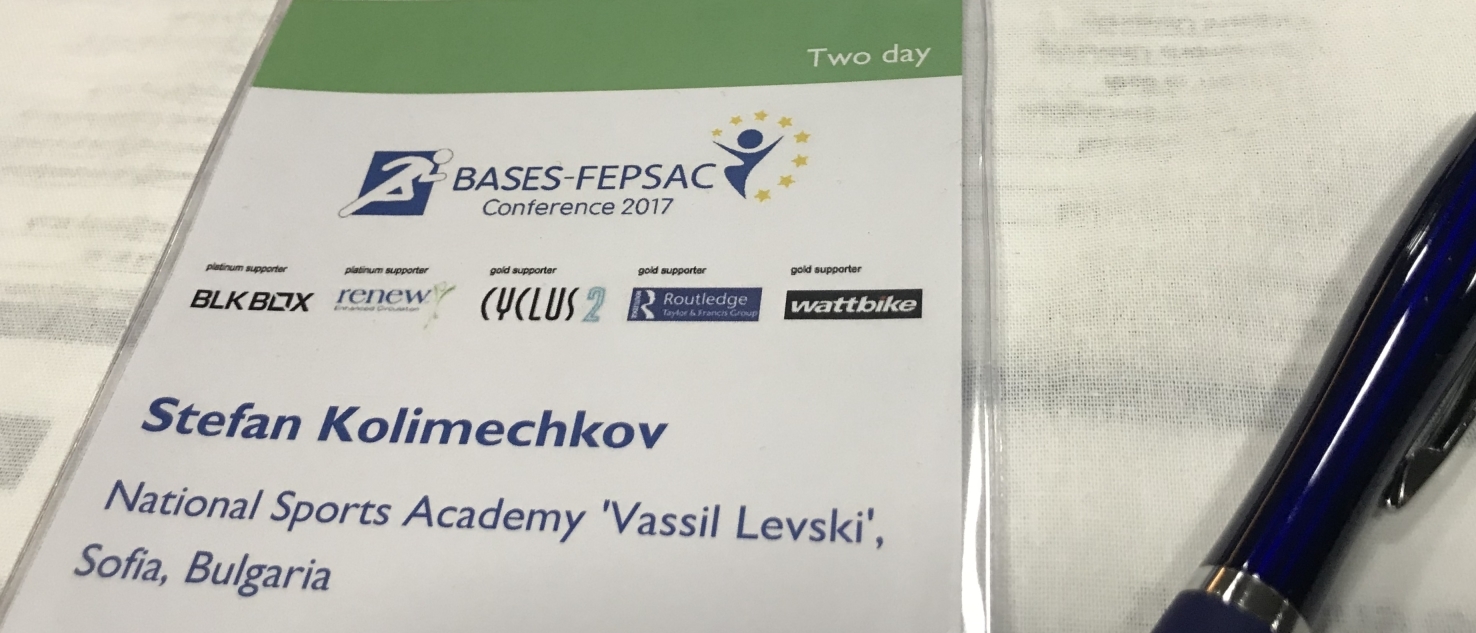
Here is my conference badge, representing the National Sports Academy at the BASES-FEPSAC Conference 2017.

East Midlands’s Conference Centre hosted the BASES-FEPSAC Conference 2017.
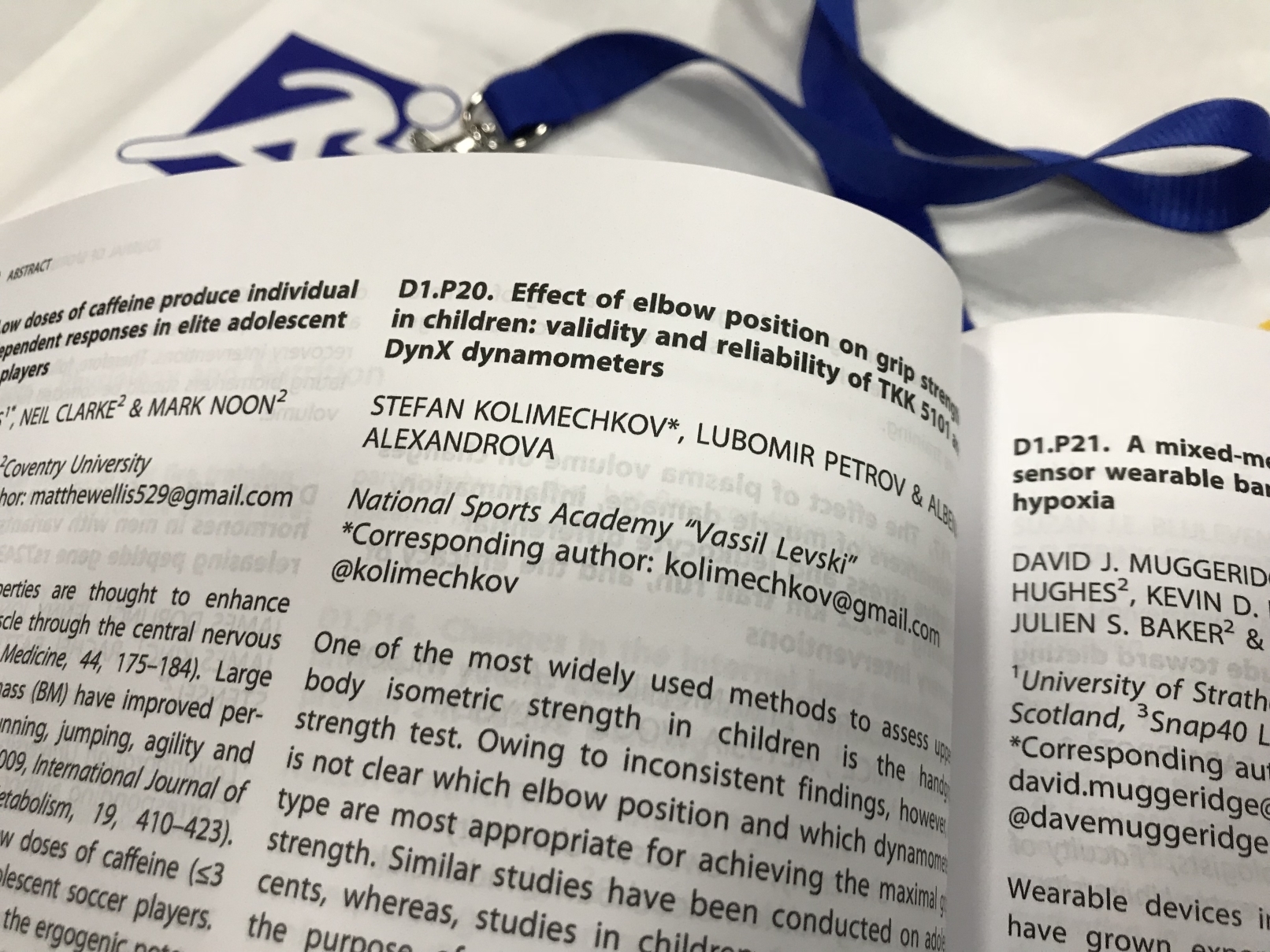
Our abstract was published in a supplement of the Journal of Sports Sciences.
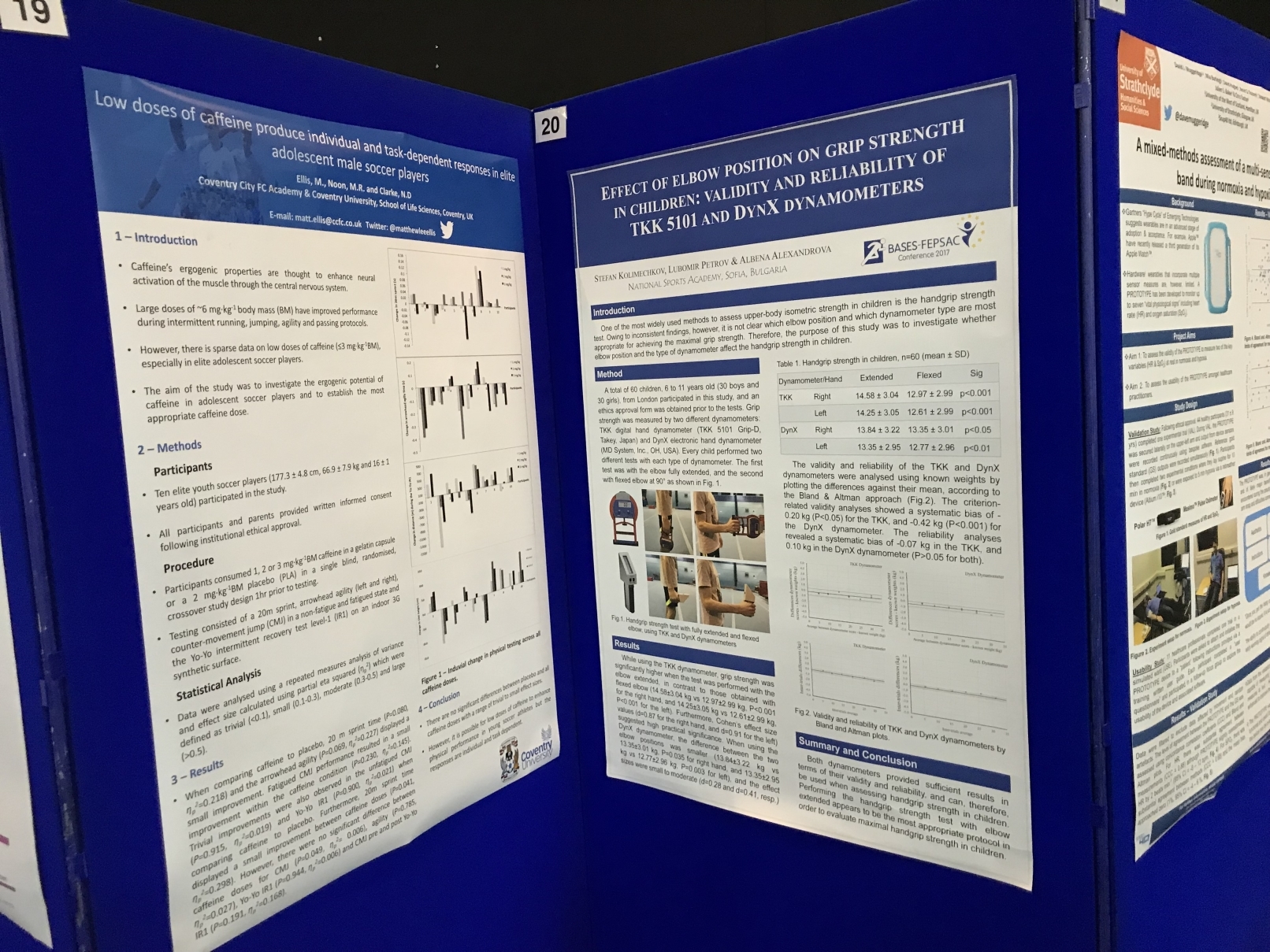
My poster (D1.P.20) at the BASES-FEPSAC Conference 2017.
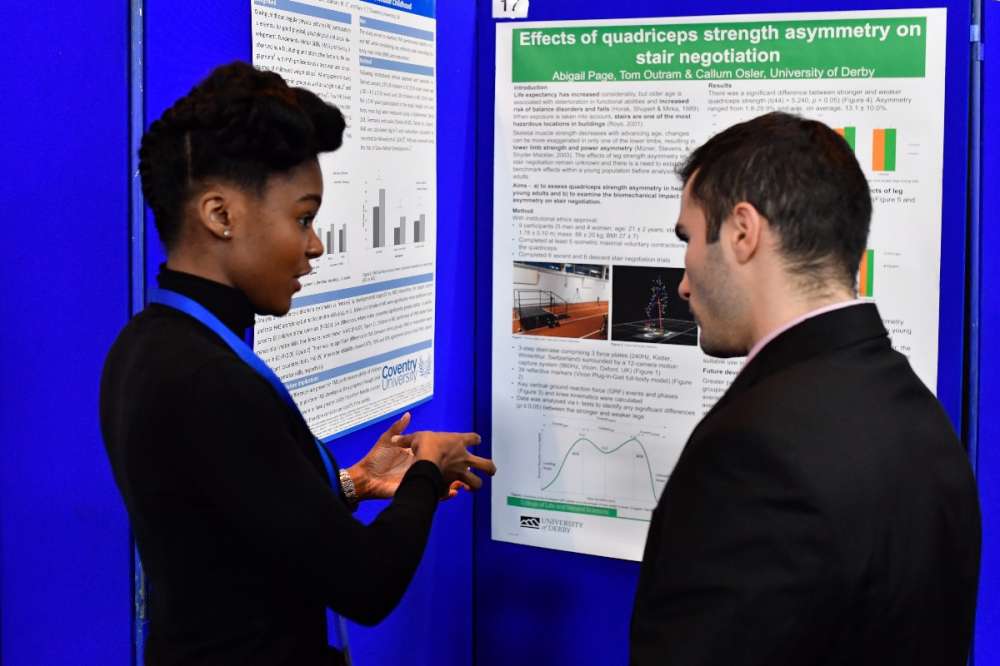
My experience at the Poster discussions and exhibition session.
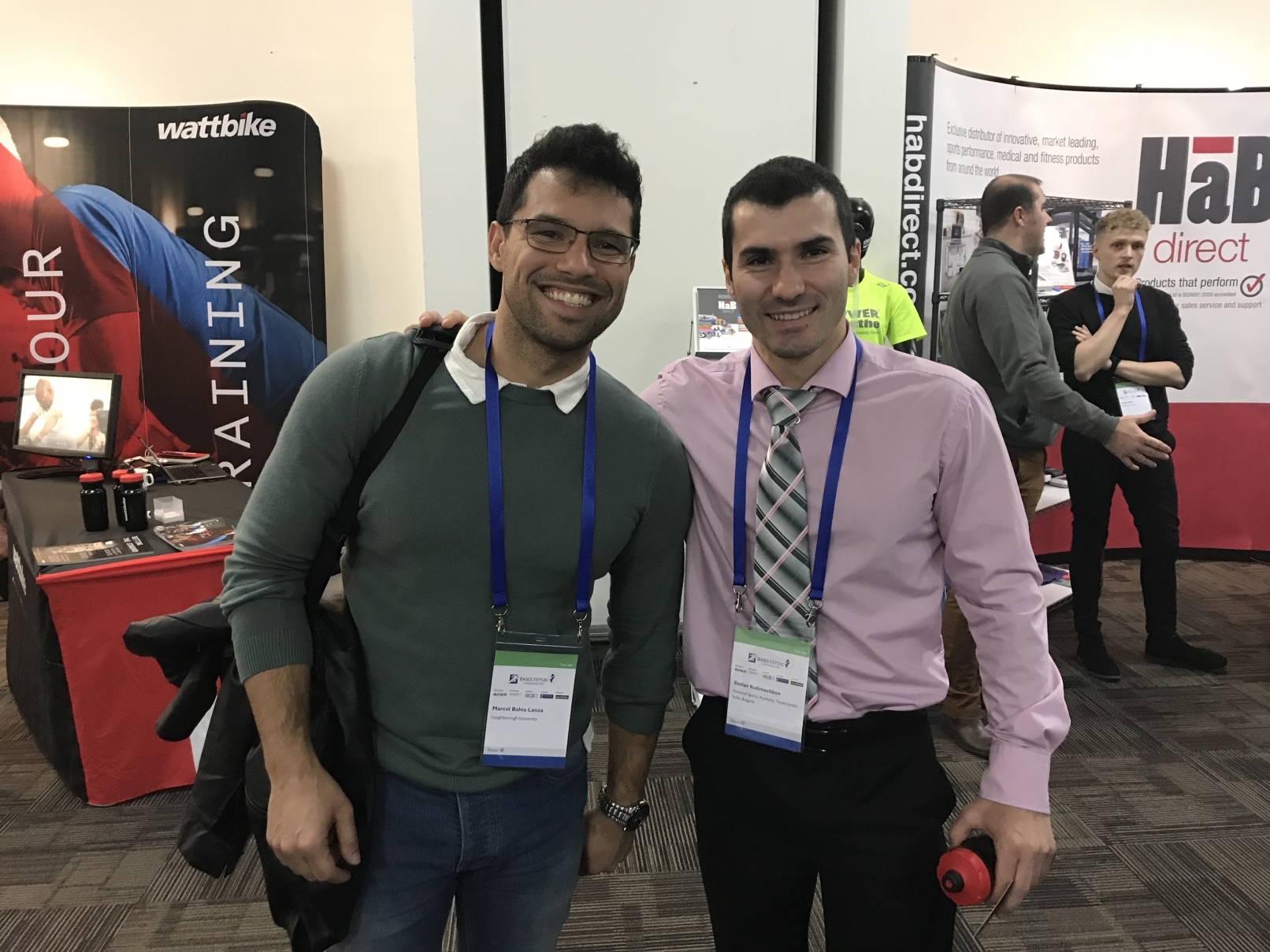
Marcel Lanza, PhD at Loughborough University and I at the BASES-FEPSAC Conference 2017.
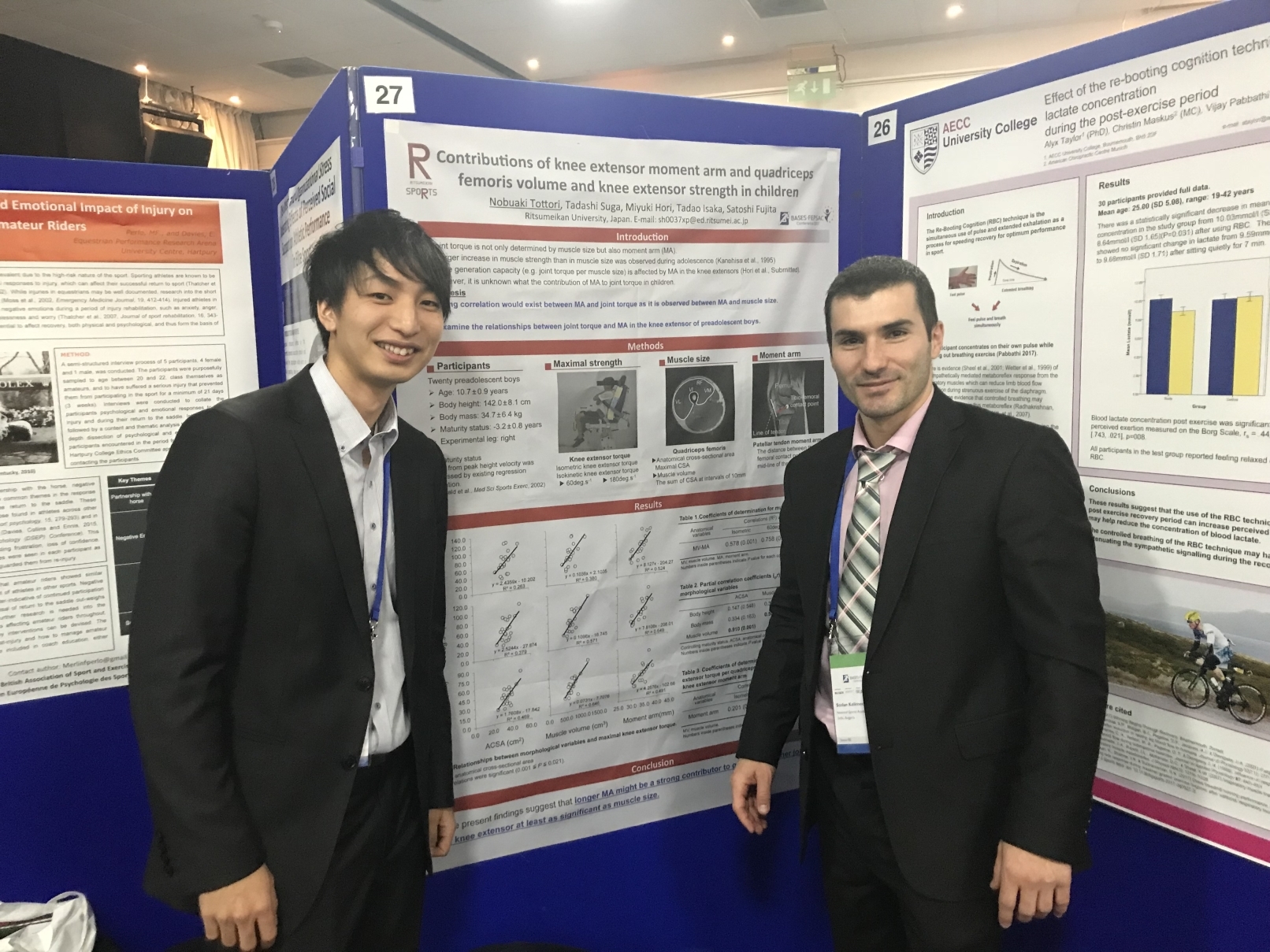
Nobuaki Tottori (Japan) and I at the Poster discussion from the BASES Conference.
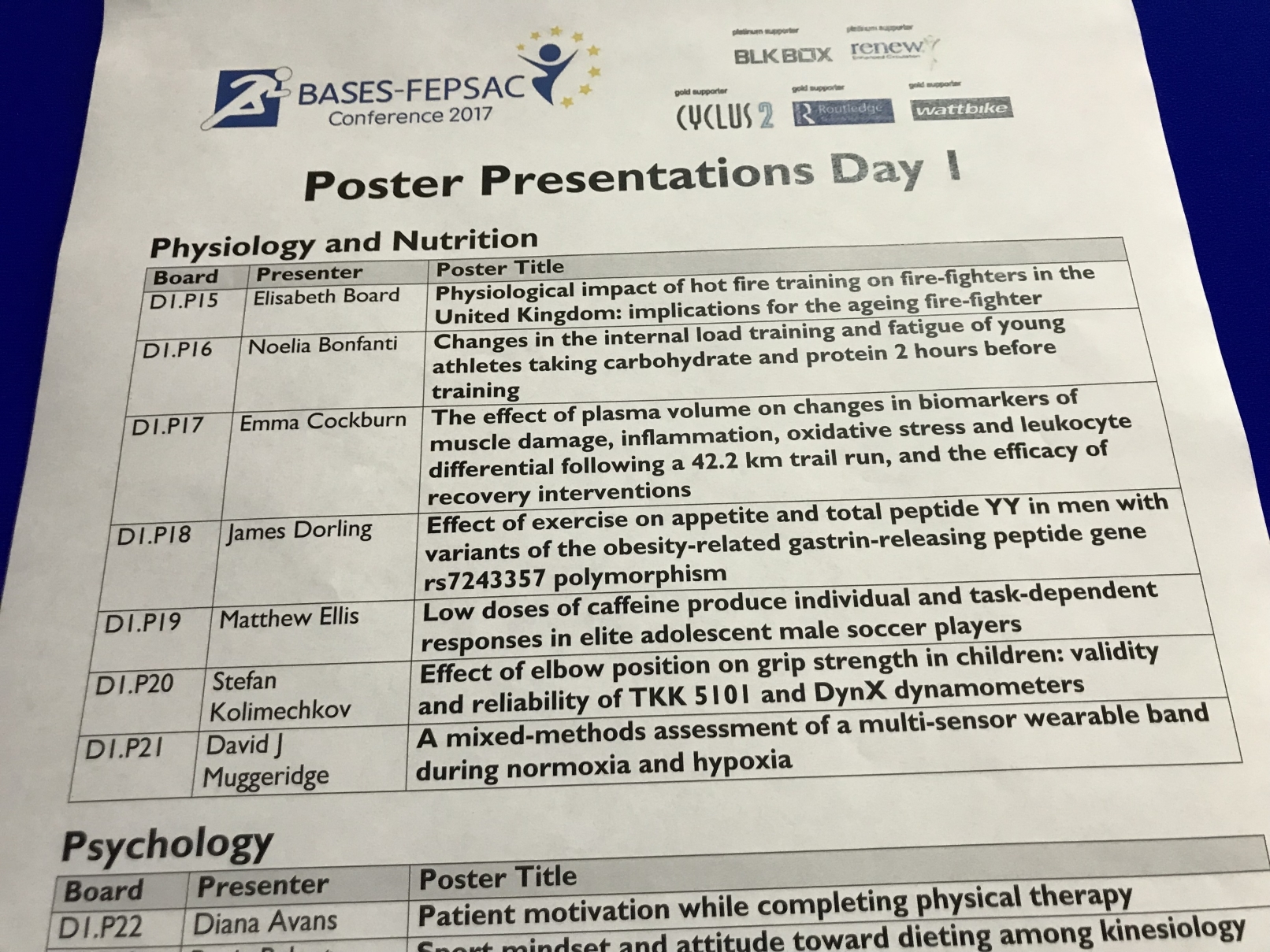
Our study: Effect of elbow position on grip strength in children: validity and reliability of TKK 5101 and DynX dynamometers (Poster Presentation Day 1).
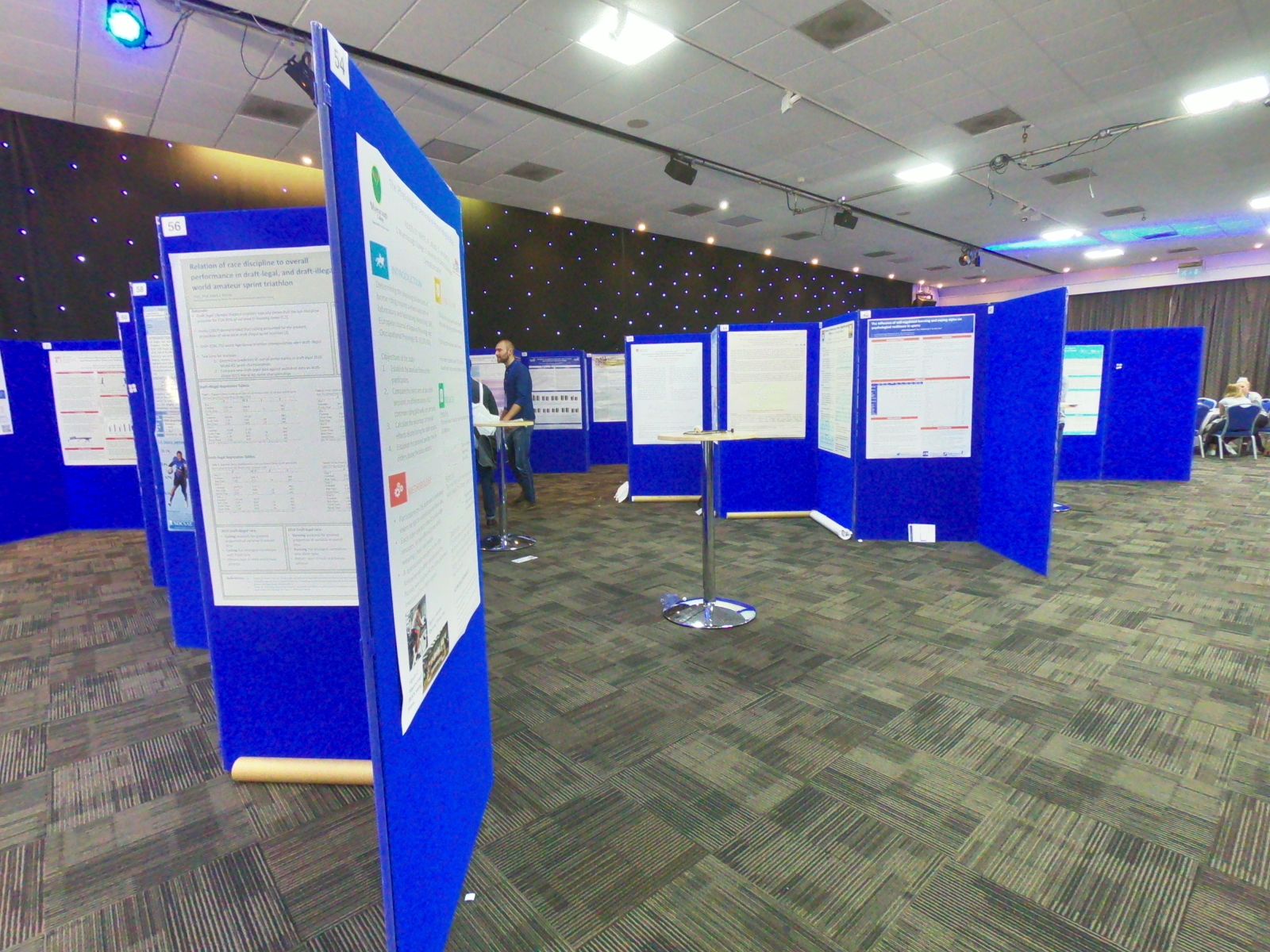
Poster discussions and exhibition session at the BASES-FEPSAC Conference 2017.
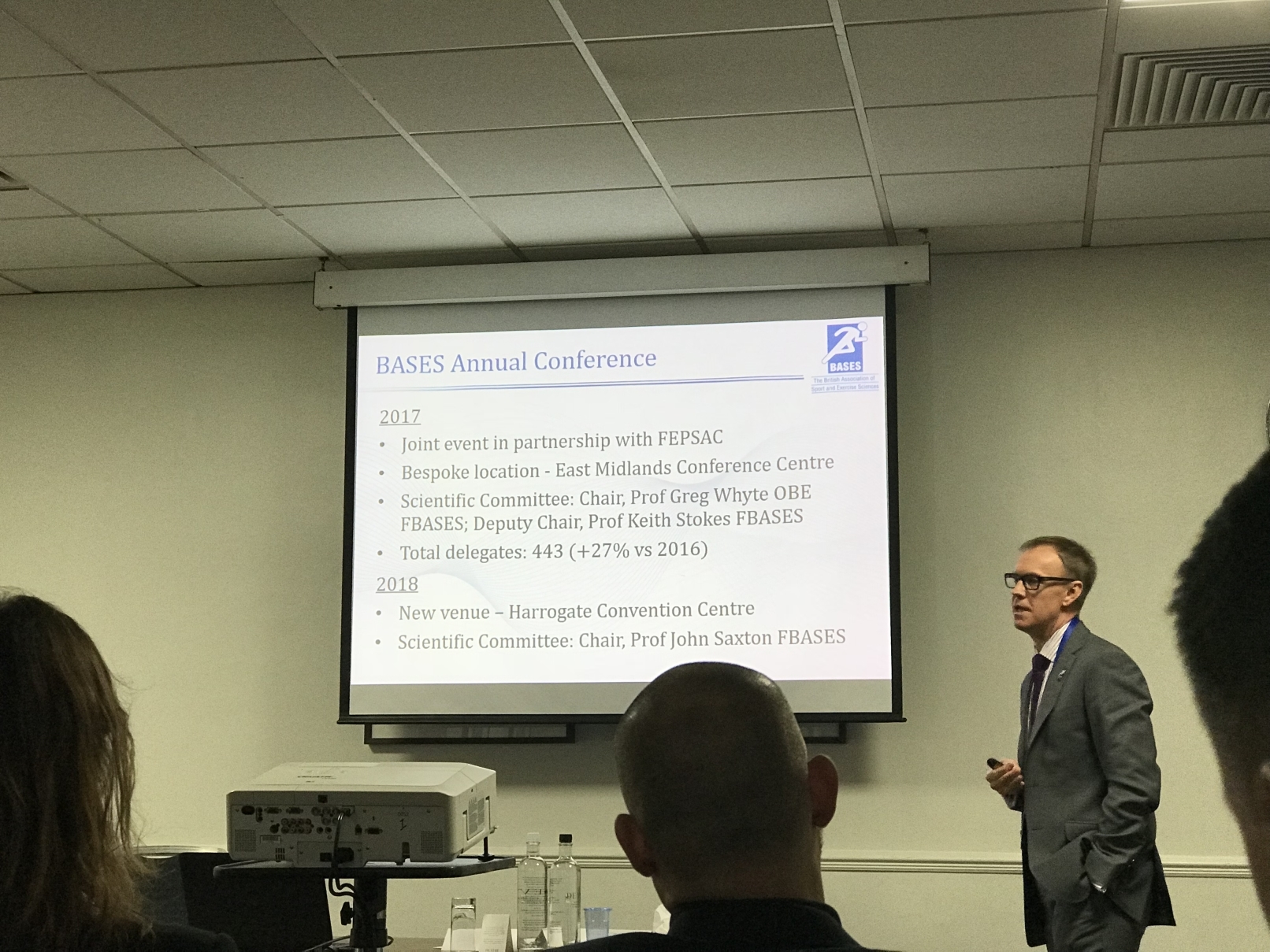
BASES Annual General Meeting at the BASES-FEPSAC Conference 2017
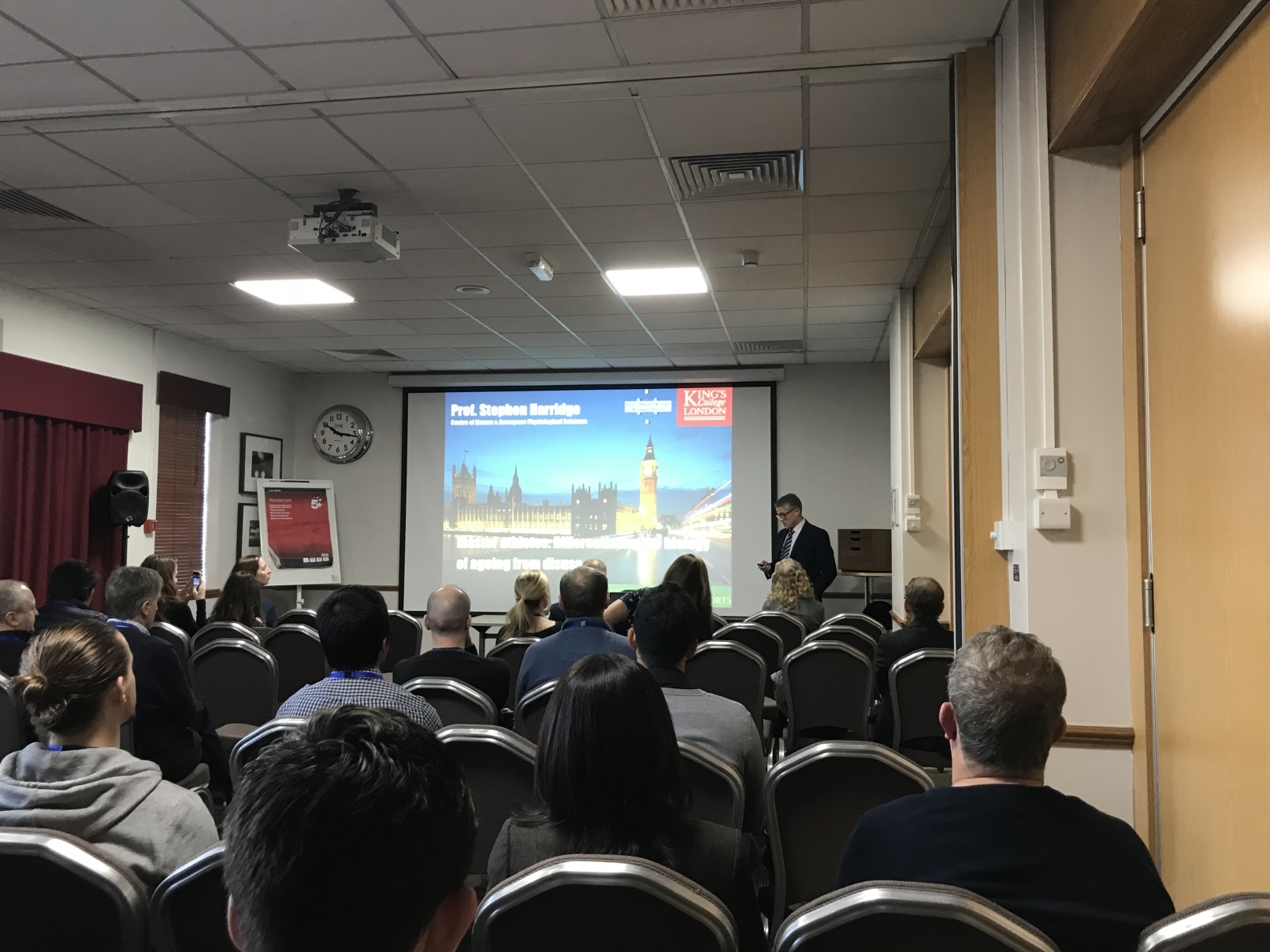
Prof. Steve Harridge from Kings College London examined the decline in physiological systems that occur with ageing.
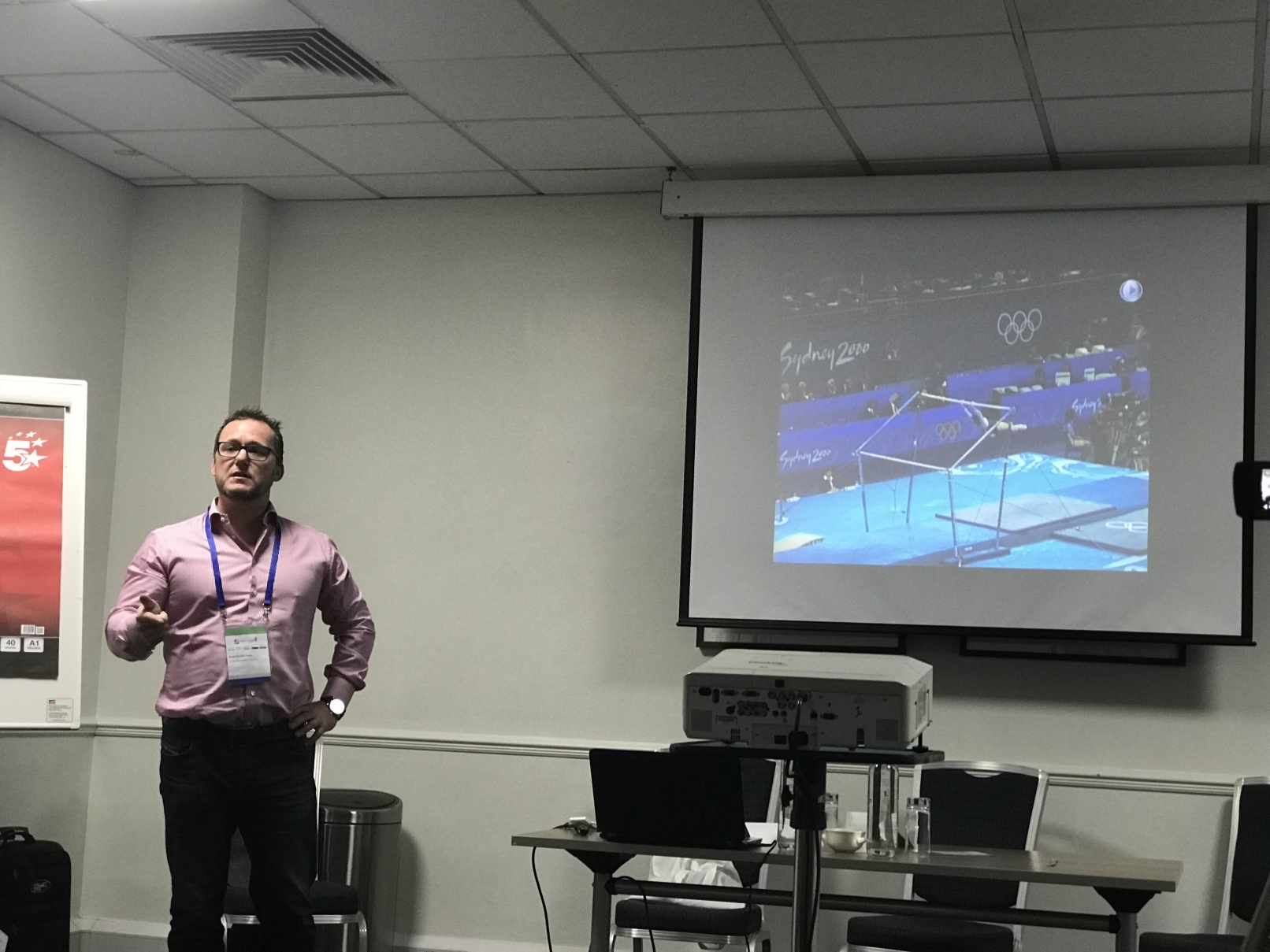
Prof. Gareth Irwin from the Cardiff Metropolitan University at the BASES-FEPSAC Conference 2017.

Prof. Sir Muir Gray CBE, University of Oxford presented his talk on Exercise versus pharma: what is the future of healthcare?
How to cite this study:
After the 2017 BASES Conference in Nottingham, our study was built upon further and the complete findings were published in the Pedagogy of Physical Culture and Sports, Vol.24(5), 2020, so you can cite the article in this journal as follows:
Kolimechkov, S., Castro-Piñero, J., Petrov, L., & Alexandrova, A. (2020). The effect of elbow position on the handgrip strength test in children: validity and reliability of TKK 5101 and DynX dynamometers. Pedagogy of Physical Culture and Sports, 24(5), 240-247. https://doi.org/10.15561/26649837.2020.0504
